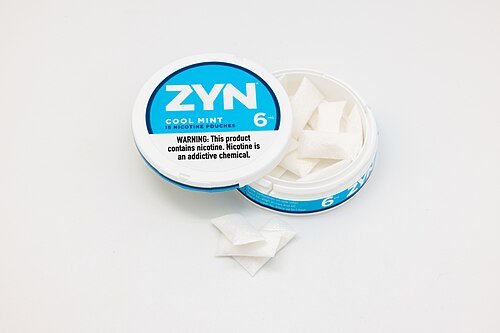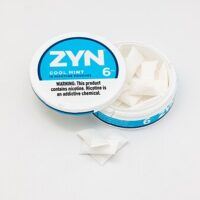






























































Photograph Source: Aphis Marta – CC BY-SA 4.0
As they were with the advent of e-cigarettes and vapes, parents of teens are up in arms about the rise in popularity of nicotine pouches like Zyn. While it is certainly their right to care about the goings-on of their children, these meddlesome parents are especially prone to misinformation (or, as the chronically online youth would say, mis“zyn”formation) about these products.
Parents’ misguided concerns have been intentionally weaponized by anti-tobacco activists and lowbrow journalists against an important harm reduction tool. Nicotine pouches like Zyn offer both established and new users of nicotine and tobacco products an alternative method of consumption that is safer than both cigarettes and the illicit, unregulated vapes that have taken over the market. While it’s true that Zyn and competitor brands like Velo and on! have become popular with adolescents and young adults, this shouldn’t cause the level of panic that is currently present among parents and certain media outlets.
Let’s be honest with ourselves: Without the rise in popularity of nicotine pouches, these teens would surely be using e-cigarettes and unregulated disposable vapes. And before e-cigarettes and vapes hit the market, those teens would have also been likely to smoke cigarettes. The 2024 National Youth Tobacco Survey found that there was a significant decrease in vape use among American middle and high schoolers, coincidentally as nicotine pouches became more prominent on the market. We have learned time and time again that abstinence and prohibition don’t work — and in certain cases it makes consumers less safe.
After e-cigarettes became popular among adolescents, many states and the federal government stepped up to put a stop to teen smoking. Not only did they fail to lower the teen smoking rates, they actually put these kids in even more danger. In 2018, when the federal government began banning flavored Juul pods, the most popular e-cigarette, there was a huge hole left in the market. And what filled that demand? Illicit and unregulated disposable vapes manufactured in China. Despite the FDA warning distributors to stop selling these fake vapes, consumers are still unknowingly purchasing these dangerous mystery products in almost every corner store in America today.
As regulators inadvertently increased the dangers of vaping, a safer alternative entered the market: nicotine pouches. Nicotine pouches are actually not a new product — they’ve been used widely in Europe for years, helping the EU reach their goal to be entirely smoke-free by 2040. In 2024, Sweden made history by becoming the first smoke-free country by achieving a smoking rate of less than 5 percent of the adult population. In just 15 years, the country’s smoking rate fell from 15 percent. This feat was made possible not through bans, but through consumer education and cigarette alternatives. Unlike American policymakers, the Swedes understand the importance of harm reduction.
To the dismay of prohibitionists, the smokeless Swedes are not off nicotine. Sweden is actually a major manufacturer and user of nicotine products. Snus, a pouch product filled with tobacco, has been a means of tobacco consumption for the Swedes since as early as the 16th century. In 2008, Swedish manufacturers refined the product to become the nicotine pouches that we know now.
By consuming their tobacco and nicotine orally, the Swedes are better off health-wise because they are not dealing with the harmful effects combustion has on the lungs. Many anti-tobacco advocates will try to discredit the harm reduction of nicotine pouches by warning that their use could potentially lead to oral cancer — though researchers at prestigious institutions like Harvard have noted that products like Zyn do not contain cancer-causing chemicals. The statistics speak for themselves. In 2020, the rate of oral cancer in Sweden was 1.75 per 100,000 people while the rate in the United States was 2.01 per 100,000 people.
What the anti-tobacco advocates fail to point out is that adult and teen smoking rates in the United States are at an all time low! This incredible achievement is due in large part because of the rise in popularity of Zyn. Even if teens who had never previously smoked or vaped start using nicotine pouches, that act is an example of harm reduction because the pouches are less harmful than the alternative products on the market. It’s naive to imagine that in the absence of Zyn and similar products these teens would abstain from nicotine and tobacco. Instead, these teens are using a safer alternative, avoiding risks associated with combustion from cigarettes and the unknown side effects of illicit disposable vapes.
Lawmakers must be realistic. From alcohol to tobacco to Red Dye 40, there are so many things on the legal marketplace that are not “good” for the health of consumers. Pulling a less harmful product like Zyn from the shelves because it goes against their personal health ethics is selfish and misguided. All levels of government need to take note of the very recent disaster that is the ban of flavored e-cigarettes and keep their hands off nicotine pouches.
The post Combating Mis“zyn”formation on Nicotine Pouches appeared first on CounterPunch.org.
This post was originally published on CounterPunch.org.